The NFL’s wounded workforce is strong, athletic and wants to exhaust all medical deductibles.
For every young and healthy star bracing for life-changing money when free agency kicks off Thursday, dozens of others battle injury stigmas that will affect their bottom lines.
That doesn’t mean these players can’t find quality jobs. ESPN’s All-Wounded Free Agency Team is stocked with playmakers pairing past accomplishments with past-their-prime joints. Teams must decide how much these players have left.
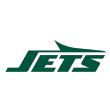
Former team: New York Jets
Age: 26
Ailment: Torn ACL in October
Buzz: Smith has created minimal buzz in the national quarterback discussion while nursing a torn ACL that ended an uneven career in New York. But Smith believes he was poised to break out before the injury. “My mistakes were shown on the field the first two years, and then me getting better has kind of been behind the scenes,” Smith told NFL Network. “The next time I step onto the field, it’ll be what they expect.”
Outlook: Someone will take a chance on Smith as a backup. He still has transferable traits, including arm strength.

Former team: Minnesota Vikings
Age: 31
Ailments: Knee history includes torn meniscus in 2016 and torn ACL in 2011.
Buzz: The Vikings are basically waving goodbye to Peterson from the balcony. General manager Rick Spielman lauds a deep running back draft class and said Peterson will “always be a Viking.” Meanwhile, Peterson turns 32 in a few weeks and thrives off antiquated I-formation sets — not exactly a winning free agency formula. But Peterson won the rushing title two years ago, and the last time he wanted to prove doubters wrong coming off knee issues, he went for 2,097 yards in 2012.
Outlook: Peterson is an attractive option for teams with a quality quarterback and a we’re-one-piece-away belief. Peterson could sign an incentive-laden contract worth $4-6 million per year in base money. Aaron Rodgers wouldn’t mind faking play-actions with Peterson on third downs.

Former team: Kansas City Chiefs
Age: 30
Ailment: Torn ACL in 2015, lingering swelling in 2016
Buzz: An all-the-way-back Charles can inject life into an offense, but playing a combined eight games in the past two seasons taints his value. The benefit of those missed games: If Charles’ knee returns to full strength, he’s awfully well-rested. Charles has 1,604 touches in nine seasons. DeAngelo Williams prolonged his career with Pittsburgh after splitting carries for nine seasons in Carolina. Charles might be best-utilized as a third-down playmaker with ability to spot-start games when necessary.
Outlook: Watch out for the Eagles, whose head coach Doug Pederson, a former Chiefs coordinator, has intimate knowledge of Charles’ skill set. Charles also would be an ideal complementary piece to starter Robert Kelley in Washington.

Former team: Tampa Bay Buccaneers
Age: 34
Ailment: ACL injury in October
Buzz: V-Jax finally showed signs of breaking down last season. The once-potent field-stretcher averaged a career-low 11.5 yards per catch before the injury. But Tampa Bay kept him in 2016 despite a cap hit of nearly $10 million because of his leadership and veteran savvy while giving Jameis Winston a No. 2 receiving option. As the wide receiver position trends younger, Jackson’s age/injury quotient will be tough to overcome.
Outlook: Jackson is more of a depth signing at this point. He will likely follow the path of other prominent 30-somethings rehabbing injuries: Wait until late spring or summer, see which teams have a playmaking need, then show off your health to those teams.

Former team: Pittsburgh Steelers
Age: 26
Ailment: Torn labrum
Buzz: Wheaton has much to prove after his big contract year steered its way into the training room. After 97 catches from 2014 to ’15, Wheaton finished last season with four catches and never looked comfortable while fighting through the shoulder injury before surgery. The Steelers badly needed a reliable No. 2 receiver last year, too.
Outlook: Wheaton might have to rebuild his value on a two- or three-year bridge contract, but he can still play, and there’s enough money out there for receivers with adequate speed and good hands. He still must show he can consistently make contested catches.
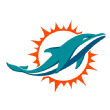
Former team: Miami Dolphins
Age: 28
Ailments: A reported four concussions in four seasons spanning stints in Cleveland and Miami
Buzz: For the second time in his career, Cameron enters unrestricted free agency with a “buyer beware” sticker on his helmet. Retirement might be a consideration for Cameron. But his talent shined through in his last contract: Miami gave him $15 million over two years despite well-documented concussion issues in Cleveland. And the last time he was truly featured in an offense, Cameron caught 80 passes for 917 yards and seven scores in 2013. This isn’t an athletic issue.
Outlook: Cameron will likely remain on the free-agency shelf early on while tight ends Martellus Bennett, Jack Doyle and Jared Cook get theirs. But contending teams will be intrigued while looking for value deals.

Former team: Minnesota Vikings
Age: 27
Ailment: Underwent surgery in September to repair a torn labrum in his right hip
Buzz: Kalil had his turnstile moments in Minnesota, but the hip issue had lingered for a few years, so perhaps he’ll showcase more explosion off the ball in Year 6. Kalil has been training in California and has returned to his ideal playing weight of 315 pounds. He wants to return to Minnesota, and the team might be open to re-signing him.
Outlook: Kalil should benefit from a weak left tackle market. After Andrew Whitworth, teams won’t find many safe bets. If the Panthers want to rebuild a porous line, Kalil could join his brother Ryan in Carolina.
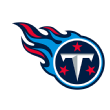
Former team: Tennessee Titans
Age: 25
Ailment: Underwent right hand surgery in September
Outlook: Warmack’s injury seems manageable, but more alarming is the Titans’ apparent reluctance to re-sign a former top-10 pick. The team didn’t pick up his fifth-year option in 2016, and the injury leaves Warmack grasping for second life in free agency. But Warmack was a beast coming out of Alabama, and athletic guard play is invaluable in today’s game.
Buzz: Warmack will get his chance to avoid draft-bust status, but he’ll likely have to wait behind Cincinnati’s Kevin Zeitler, Detroit’s Larry Warford and Green Bay’s T.J. Lang in the interior line hierarchy.

Former team: Carolina Panthers
Age: 30
Ailment: Hamstring issues forced him to miss action in 2015 and 2016
Buzz: After averaging 10.5 sacks per year from 2010 to 2014, Johnson managed five sacks total the past two years while missing a combined 10 games. Older players sometimes struggle shaking lingering hamstring issues, and Johnson turns 31 in July. Johnson was a free-agency king in 2011 with a six-year, $72 million deal. He played five years on that deal, which is pretty impressive. He’s still a serviceable lineman but lacks the explosion that earned that deal.
Outlook: Teams won’t ignore good rotational defensive end help. Johnson should land a job somewhere. But his days in Carolina appear numbered.

Former team: Denver Broncos
Age: 34
Ailment: Underwent back surgery to repair ruptured disk
Buzz: Ware can follow the blueprint of late-30s marvels Dwight Freeney and James Harrison by using savvy, leverage and strength to offset declining speed. Ware has remained productive into his 30s with nearly 0.6 sacks per game in three seasons with Denver. His recovery from the back injury will take time but shouldn’t be career-ending.
Outlook: Joining a contender as a situational pass-rusher is the ideal blueprint for Ware, who reportedly is leaving the door open for a return to Dallas. Denver appears ready to move on. Ware got three years and $30 million in 2014. He won’t get that now, but a one- or two-year deal will satisfy.

Former team: San Diego Chargers
Age: 26
Ailment: Torn Achilles in September
Buzz: Te’o was a steady riser in the Chargers’ defense and earned team captain honors in 2016. That’s why his injury is so unfortunate. He went from an attractive free agent in a middling inside linebacker market to a big question mark. Science and rehab advancements can help players recover from serious injuries (Demaryius Thomas and Brent Grimes are among success stories). Though regaining his first step is hardly a guarantee, Te’o plays more off instincts than raw athleticism.
Outlook: Te’o might have to settle for a short-term prove-it deal and re-emerge in a future year with a bigger salary cap. Watch out for Oakland, which has former Chargers coordinator John Pagano on staff. He’s got a linebacker background and worked extensively with Te’o for four seasons.

Former team: New York Jets
Age: 31
Ailment: “Body’s breaking down”
Buzz: That’s not our assessment. Those are Revis’ words to Newsday back in October, shortly after he missed action with a hamstring injury. The past 12 months have been nightmarish for Revis, who was slow to recover from offseason wrist surgery, reported to camp out of shape, struggled to cover receivers one-on-one, got cut by the Jets and faces felony assault charges for his alleged role in an altercation in Pittsburgh. Revis has hit the trifecta of unattractive free-agency profiles — age, injury, legal trouble.
Outlook: Teams aren’t eager to even entertain signing him while his legal case continues. Yes, perhaps Revis can become a safety, a move Revis has publicly embraced. But Revis gets $6 million whether he plays or not. The Jets owe him that unless another team covers some of payout by signing him. How motivated will he really be?
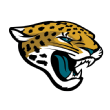
Former team: Jacksonville Jaguars
Age: 27
Ailments: Pectoral, biceps and hamstring injuries since 2014
Buzz: What Amukamara does on the field isn’t the big issue. Staying there is. He has missed 27 games in six seasons, including at least two games in five of the past six years. In 2016, he signed a one-year, $5.5-million deal with Jacksonville to prove he could stay healthy, and he acquitted himself well in 14 games. Amukamara will have a market as a physical press-man corner with adequate size.
Outlook: Amukamara won’t break the bank in a crowded cornerback class, but he’ll get paid quality coin in the second tier. Watch out for a team such as Pittsburgh, which is close to a Super Bowl run but needs one more athletic corner.




 Round 1: April 27, 8 p.m. ET
Round 1: April 27, 8 p.m. ET
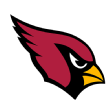 Arizona Cardinals: The Cardinals saw firsthand last season how important having a second experienced cornerback is to their defense. Finding a veteran who can play from Day 1 would cause immediate improvement. Read more.
Arizona Cardinals: The Cardinals saw firsthand last season how important having a second experienced cornerback is to their defense. Finding a veteran who can play from Day 1 would cause immediate improvement. Read more.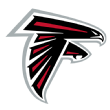 Atlanta Falcons: The Falcons underwent a major facelift at linebacker last offseason; this year, it’s the defensive line’s turn. They need to find a front-four combo capable of pressuring the quarterback. Read more.
Atlanta Falcons: The Falcons underwent a major facelift at linebacker last offseason; this year, it’s the defensive line’s turn. They need to find a front-four combo capable of pressuring the quarterback. Read more. Baltimore Ravens: The No. 1 priority in free agency has to be signing a proven and consistent veteran to make up for the losses of Steve Smith Sr. (retired) and Kamar Aiken (free agent). Read more.
Baltimore Ravens: The No. 1 priority in free agency has to be signing a proven and consistent veteran to make up for the losses of Steve Smith Sr. (retired) and Kamar Aiken (free agent). Read more. Buffalo Bills: The Bills have an NFL-high 23 unrestricted free agents, and they would be wise to allow most of them to sign elsewhere. With $21 million in salary-cap space, they do not have room to bring back everyone. Read more.
Buffalo Bills: The Bills have an NFL-high 23 unrestricted free agents, and they would be wise to allow most of them to sign elsewhere. With $21 million in salary-cap space, they do not have room to bring back everyone. Read more. Chicago Bears: The Bears have to fix their quarterback issues — plain and simple. Chicago must explore all options, and that includes trading for New England’s Jimmy Garoppolo. Read more.
Chicago Bears: The Bears have to fix their quarterback issues — plain and simple. Chicago must explore all options, and that includes trading for New England’s Jimmy Garoppolo. Read more. Cincinnati Bengals: The good news? A.J. Green is now healthy. The bad news? The Bengals still need to find another player who can stretch the field. Read more.
Cincinnati Bengals: The good news? A.J. Green is now healthy. The bad news? The Bengals still need to find another player who can stretch the field. Read more.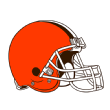 Cleveland Browns: The Browns have to get the most important position on the team settled: quarterback. They can try to trade for Jimmy Garoppolo, they can draft a QB or they can turn to free agency. Read more.
Cleveland Browns: The Browns have to get the most important position on the team settled: quarterback. They can try to trade for Jimmy Garoppolo, they can draft a QB or they can turn to free agency. Read more. Dallas Cowboys: The temptation is to look for help with the pass rush right off the bat, but the Cowboys will not pay big, which means they need to fill their secondary holes first at moderate prices. Read more.
Dallas Cowboys: The temptation is to look for help with the pass rush right off the bat, but the Cowboys will not pay big, which means they need to fill their secondary holes first at moderate prices. Read more.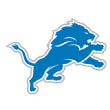 Detroit Lions: Defensive line is a definite area of need for Detroit, and while it is strong in the draft, the Lions have a lot of work to do when it comes to bringing in players who can generate a pass rush. Read more.
Detroit Lions: Defensive line is a definite area of need for Detroit, and while it is strong in the draft, the Lions have a lot of work to do when it comes to bringing in players who can generate a pass rush. Read more. Green Bay Packers: Whether it’s Nick Perry, Datone Jones, Julius Peppers or someone from another team, the Packers should be careful not to overpay for pass-rushers. Read more.
Green Bay Packers: Whether it’s Nick Perry, Datone Jones, Julius Peppers or someone from another team, the Packers should be careful not to overpay for pass-rushers. Read more. Houston Texans: Cornerback A.J. Bouye’s play last season is worth the sizable contract he will get this offseason, and the Texans could find room for him if they do not spend their money on a starting quarterback. Read more.
Houston Texans: Cornerback A.J. Bouye’s play last season is worth the sizable contract he will get this offseason, and the Texans could find room for him if they do not spend their money on a starting quarterback. Read more.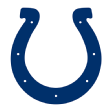 Indianapolis Colts: The Colts need a complete overhaul at linebacker to the point that they might end up with four new starters at that position next season. Read more.
Indianapolis Colts: The Colts need a complete overhaul at linebacker to the point that they might end up with four new starters at that position next season. Read more. Jacksonville Jaguars: The Jaguars have already agreed to a trade with Miami for left tackle Branden Albert, but the unit’s biggest weakness in 2016 was at the guard position. Read more.
Jacksonville Jaguars: The Jaguars have already agreed to a trade with Miami for left tackle Branden Albert, but the unit’s biggest weakness in 2016 was at the guard position. Read more. Los Angeles Rams: The Rams’ only established receiver is Tavon Austin, and they need a couple of playmakers. Los Angeles isn’t expected to retain unrestricted free agents Kenny Britt or Brian Quick. Read more.
Los Angeles Rams: The Rams’ only established receiver is Tavon Austin, and they need a couple of playmakers. Los Angeles isn’t expected to retain unrestricted free agents Kenny Britt or Brian Quick. Read more. New England Patriots: The Patriots have a free-agent class as significant and deep as that of any other team in the NFL, and they plan to keep a dialogue open with Dont’a Hightower on a potential return. Read more.
New England Patriots: The Patriots have a free-agent class as significant and deep as that of any other team in the NFL, and they plan to keep a dialogue open with Dont’a Hightower on a potential return. Read more. New Orleans Saints: The Saints have labeled an edge-rushing defensive end as a must this offseason. But their chances of spending mega millions on an elite talent took a big hit last week. Read more.
New Orleans Saints: The Saints have labeled an edge-rushing defensive end as a must this offseason. But their chances of spending mega millions on an elite talent took a big hit last week. Read more. New York Giants: Anyone who watched the Giants in 2016 saw the relentless pressure Eli Manning faced off the edges. The Giants need a veteran upgrade over youngsters Ereck Flowers and Bobby Hart. Read more.
New York Giants: Anyone who watched the Giants in 2016 saw the relentless pressure Eli Manning faced off the edges. The Giants need a veteran upgrade over youngsters Ereck Flowers and Bobby Hart. Read more.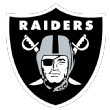 Oakland Raiders: The Raiders are expected to have just under $43 million in cap space, but their most important moves may be in taking care of their dual faces of the franchise first. Read more.
Oakland Raiders: The Raiders are expected to have just under $43 million in cap space, but their most important moves may be in taking care of their dual faces of the franchise first. Read more.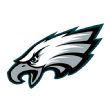 Philadelphia Eagles: The Eagles need wide receiver help in a big way and are sure to sign at least one wideout over the coming days. It’s critical, however, that they resist committing to a contract they might soon regret. Read more.
Philadelphia Eagles: The Eagles need wide receiver help in a big way and are sure to sign at least one wideout over the coming days. It’s critical, however, that they resist committing to a contract they might soon regret. Read more. San Francisco 49ers: The 49ers have the second-most cap space in the NFL, so they can afford to chase top free agents. Of course, that doesn’t mean they should spend for the sake of spending. Read more.
San Francisco 49ers: The 49ers have the second-most cap space in the NFL, so they can afford to chase top free agents. Of course, that doesn’t mean they should spend for the sake of spending. Read more.
 Washington Redskins: The Redskins have four free-agent defensive linemen, and they will attack this position in the offseason, both in free agency and the draft. Read more.
Washington Redskins: The Redskins have four free-agent defensive linemen, and they will attack this position in the offseason, both in free agency and the draft. Read more.